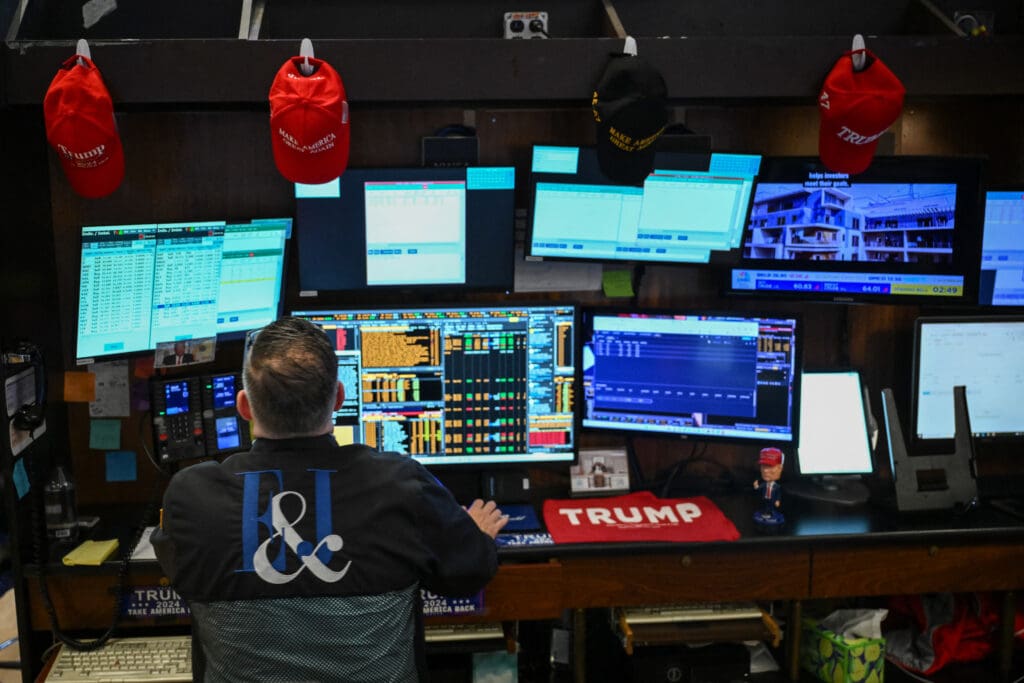President Donald Trump’s so-called reciprocal tariffs unleashed a global trade war and sent financial markets tumbling. China is Trump’s stated main target in his quest to restore “fair” trade. But the new tariff policy will have far-reaching consequences—especially on the economies in the Global South and their relationship to the Global North.
The new global equilibrium in trade and investment resulting from the Trump shock will amount to a decoupling between the Global North and the Global South. There is no doubt that the decoupling will be a net negative for the global economy over the long run.
In the short run, the economies of the Global South will face persistently lower commodity prices, pervasive inflation and financial distress. For commodity exporters like Brazil and Chile, the effects will also include a drop in drilling and extraction activities, especially in places where it is more expensive to extract. For exporters of manufactured goods like India and Mexico, the Trump shock will force manufacturers to absorb higher tariffs and cope with supply chain dislocation, which could become existential. All will face a resurgence of global inflation, felt by consumers and producers through higher prices of both intermediary and final goods.
More broadly—and with lasting effect—the rampant uncertainty around tariffs will accelerate the fragmentation of global supply chains, pushing the Global North and Global South further apart. Tariffs will compel multinational companies to produce closer to their consumption markets, which are largely centered in the Global North. Incidentally, reshoring in the Global North will increase production costs and boost inflation, hurting the region’s consumers.
Implementing new industrial policies to stimulate reshoring will be costly. For governments of the Global North, such policies would widen fiscal deficits and increase debt. And the growth dividend associated with industrial policy will be limited if it is rushed and poorly executed because of perceived urgency.
It seems unlikely that North-North trade and investment can be sustained in a decoupled world. But what about South-South trade and investment? To be sure, China has become the main trading partner for most countries in the Global South and beyond, supplanting the U.S. and Europe. That could work to the South’s advantage. And there may be “winners” in the region from the rewiring of global supply chains. For instance, Brazil will benefit from higher food prices and will ship more goods to China, which traditionally imported from the United States. India, which has long lagged behind in manufacturing, could become the new hub for hardware manufacturing, including for smartphones.
Yet the fallout from the turbulence of decoupling may still end up being a net negative for the likes of Brazil and India. And consumption in the Global North ultimately drives trade and investment of the export-driven economies of the Global South either toward commodity or manufactured goods. Hence, an abrupt decoupling between the Global North and the Global South cannot be sustained. That is unless the economies of the Global South move toward a domestic consumption-based model to limit their dependence on consumption markets outside the bloc. Any meaningful rebalancing of trade would take time and require fundamental shifts in domestic credit and exchange rate markets.
Importantly, the discussion on trade cannot be separated from the discussion on capital flows. Indeed, the mirror image of trade balance between the Global North and the Global South is the capital account. It follows that the trade deficit of, say, the U.S. vis-à-vis China implies that the former is borrowing from the latter. That is a paradox, considering the difference in income. The reserve currency status of the U.S. dollar is tied to the safe asset nature of the U.S. Treasuries. Economies of the Global South, including China, hold significant amounts of Treasuries as a form of international reserves, which allows them to intervene in foreign exchange markets.
The Trump administration has argued that a weaker dollar would limit what it perceives to be excessive demand for dollar-denominated assets. The absence of an alternative reserve currency is a guarantee that a decoupling between the Global North and the Global South will be disorderly. The recent developments in Treasury markets, in which yields shot up on account of the escalating trade war between the U.S. and China, are highly unusual and deeply worrisome. While a BRICS alternative to the dollar has been much talked about, that is unlikely. To anchor an international reserve currency would require removing capital controls and much deeper and liquid bonds markets in the BRICS economies.
In that context, major central banks in the Global North face a dilemma: whether to tighten interest rates amid fear of inflation coupled with global recession fears. A tightening would normally lead to sudden stops in capital flows out of the economies of the Global South and toward safer assets in the Global North, most notably into U.S. financial assets. In turn, that would lead to a depreciation of currencies and even higher inflation and debt distress on account of fatal currency mismatch in the economies of the Global South.
While the recent spat in Treasuries signals that investors are doubting their safe assets’ nature, the absence of viable alternatives to the dollar as reserve currency isn’t good news either for the Global North or the Global South. A forced decoupling between the Global North and the Global South will be a leap into the unknown.
This article was originally published in Barron’s.
The opinions expressed in this article are those of the author and do not necessarily reflect the views of the Middle East Council on Global Affairs.



